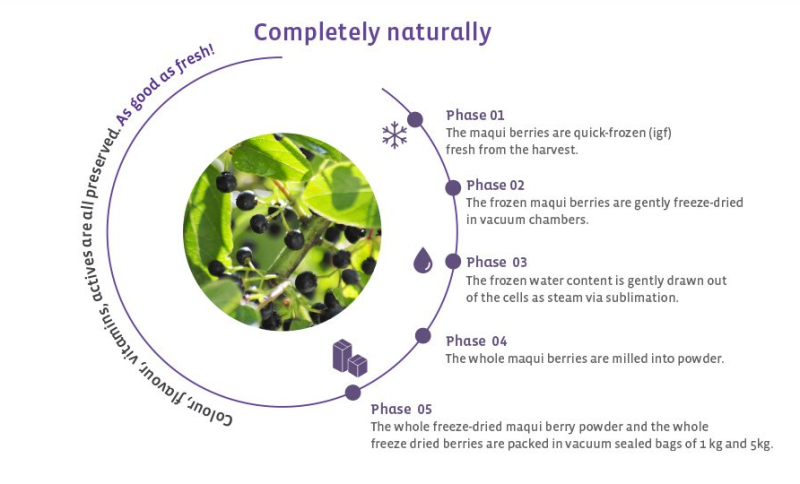Enhanced TDS
Knowde-enriched technical product data sheet
Identification & Functionality
- Ingredient Name
- Ingredient Origin
- Ingredients
- Maqui Berry
- Technologies
- Product Families
- Identification
The Maqui berry is the smallest berry (3-4 mm in diameter), but it has the highest amount of anthocyanins.
Features & Benefits
- Labeling Claims
- Food Ingredients Features
Applications & Uses
- Markets
- Applications
- Food & Nutrition Applications
- Applications
100g of MaquiMNL (freeze-dried, powdered Maqui berry) contains 1,900 mg of purple, water-soluble anthocyanins called delphinidins.
100g of MaquiMNL also contains 60 g of total fiber and only 188 cal/gr. 100% berry is used in the production of MaquiMNL, without employing enzyme procedures or adding maltodextrin.
Properties
- Physical Form
- Solubility
Technical Details & Test Data
- What is freeze-drying?
The maqui berry has the highest amount of delphinidin content in comparison to the other main berries available on the market.
An antioxidant is a molecule that is capable of delaying or preventing the oxidation of other molecules. Oxidation reactions can produce free radicals which trigger chain reactions that damage cells. Oxidative stress has been associated with the pathogenesis of many human diseases.
Freeze-drying is a process in which frozen material contained in a vacuum refrigeration system is dehydrated without the need to apply heat. This is done through sublimation where water in the form of ice contained in the sample sublimes into steam. The cellular structures are not harmed during this process and the product retains the color, shape, flavor, and nutritional value of the raw material better than in other dehydration methods.
It consists of four stages: pre-treatment of the sample, freezing, primary drying, and secondary drying.
- Maqui Berry Freeze Drying


